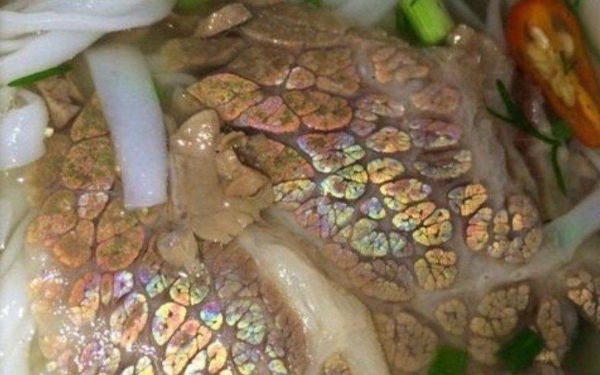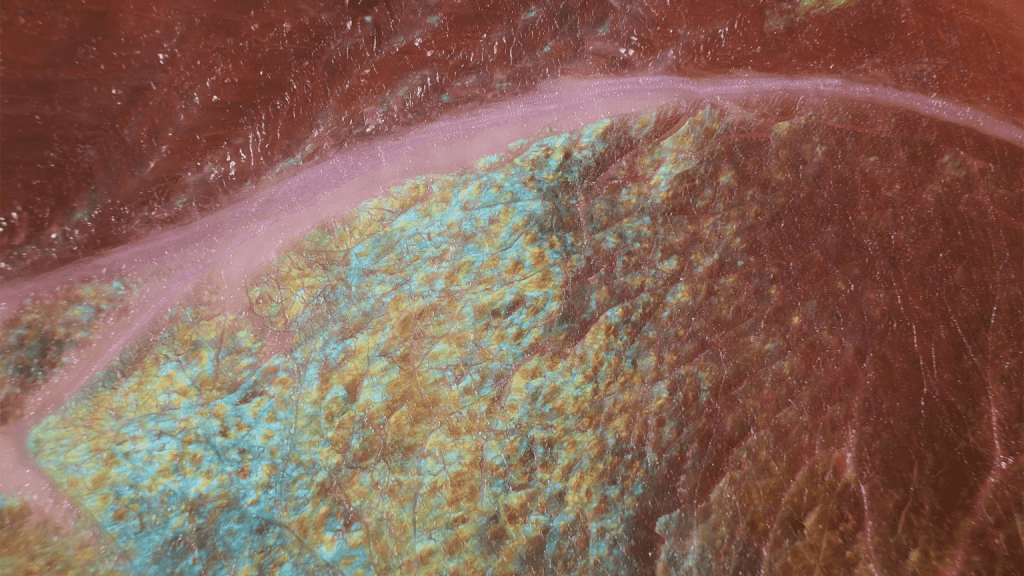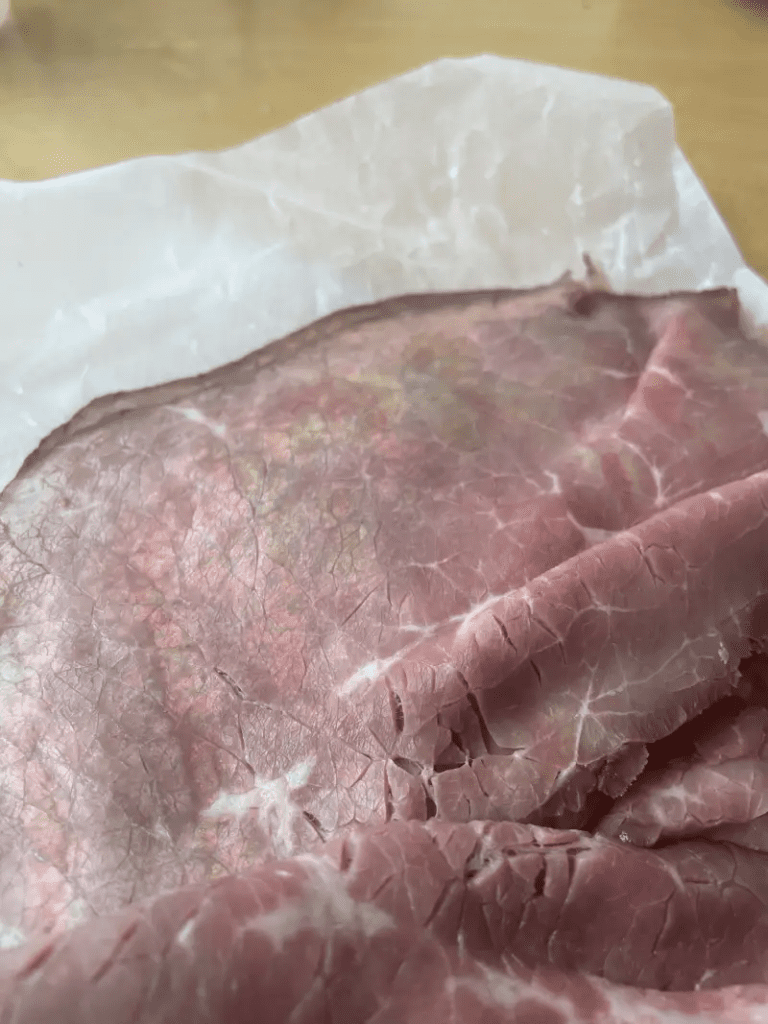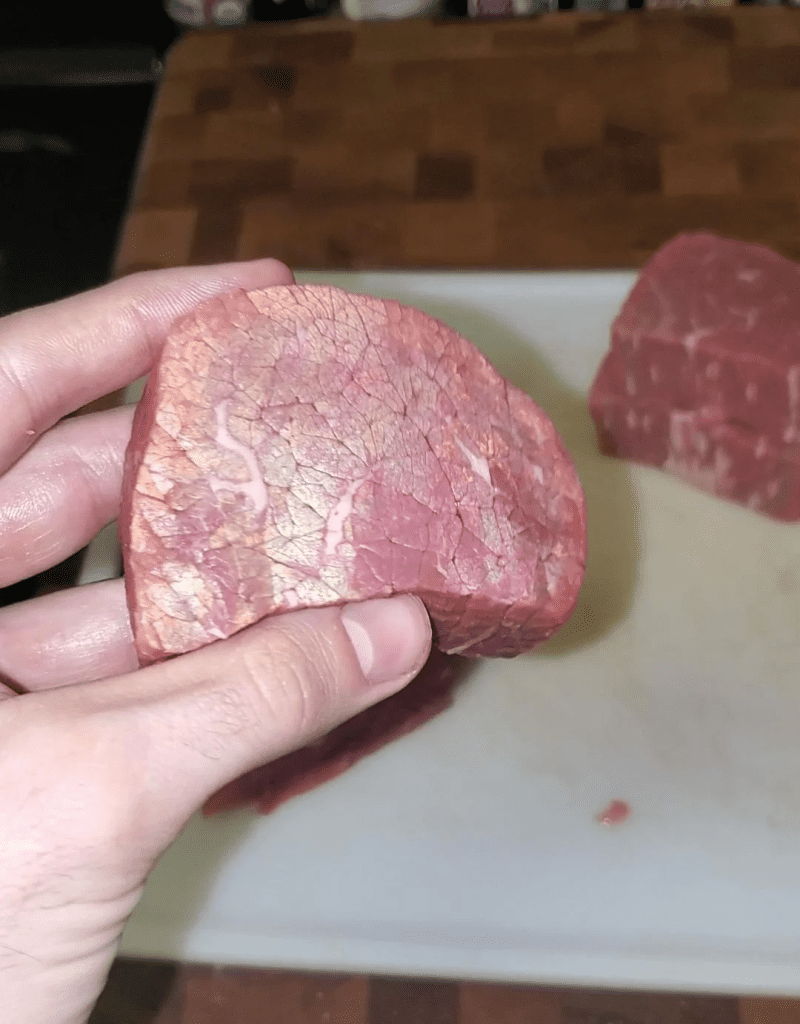If you’ve ever opened a package of roast beef or pastrami and noticed a rainbow shimmer on the surface, you might have wondered, “Is this safe to eat?” This iridescent appearance on meat can be perplexing, raising concerns about freshness and food safety. However, there’s an interesting scientific explanation for this phenomenon, and it doesn’t necessarily indicate that your meat has spoiled.

In this article, we’ll explore why some pieces of beef—and other deli meats—display those mesmerizing rainbow hues and whether or not you need to worry when you see them.
The Mystery of Iridescent Meat: What Causes the Rainbow Colors?
At first glance, the shiny rainbow colors on meat might look unnatural, but it’s actually a common phenomenon called structural color. This has nothing to do with the pigments in the meat itself but rather how light interacts with the meat’s surface.
When light hits a smooth, thin layer of muscle fibers on the meat, it refracts and diffracts, splitting into a spectrum of colors. It’s a similar effect to what you see when light passes through a prism or shines on a soap bubble. The light waves bounce off the parallel layers of muscle fibers, causing interference patterns that result in a rainbow-like shimmer on the meat’s surface.
Why Does Iridescence Appear Mostly on Deli Meats?
You might have noticed that you’re more likely to see this colorful effect on deli meats, like roast beef or ham, compared to a home-cooked steak or chicken. This is largely due to the slicing process. Deli meats are sliced with high-grade commercial equipment, which creates a smooth, flat surface. This smoothness makes it easier for light to reflect and diffract in an organized manner, creating that characteristic rainbow sheen.
In contrast, when you slice meat at home, the surface tends to be rougher. Without the same smooth finish, light reflects in various directions, diffusing the effect and making it less noticeable. As a result, you’re less likely to see these iridescent colors on home-cooked meats.
Is the Rainbow Shine More Common on Certain Types of Meat?
Yes, the iridescent effect is more visible on darker red meats, such as beef and pastrami, than on lighter meats like chicken or turkey. This is because darker colors absorb more light, making the diffracted light stand out against the meat’s surface. Although you might see the effect on poultry, it’s usually more pronounced on red meats.
The USDA has even addressed this effect, acknowledging that it can be visible on various meats, including beef, pork, and poultry. However, the brighter, deeper colors of red meats tend to make the effect more noticeable.

Does Iridescence Mean the Meat Has Gone Bad?
Seeing rainbow colors on meat does not mean it has spoiled. Iridescence itself is a harmless effect caused by light and doesn’t indicate anything about the meat’s freshness. However, certain colors, particularly a greenish tint, can sometimes signal other issues.
When meat has a greenish hue, it could be due to a natural change in pigment caused by heat or processing. On the other hand, a green color can also be a sign of spoilage, particularly if it’s accompanied by other indicators. To determine if the meat is safe to eat, check for the following signs:
- Smell: Fresh meat should have a mild or neutral odor. If it smells sour or off, that’s a red flag.
- Texture: Spoiled meat often feels slimy or sticky to the touch. Fresh meat, on the other hand, should feel smooth and moist but not slimy.
- Expiration Date: Always check the sell-by date. If the meat is past its date, it’s best to err on the side of caution and dispose of it.

How to Tell the Difference Between Harmless Iridescence and Spoilage
While iridescent colors are safe, it’s understandable to feel concerned if you spot something unusual on your food. Here’s how you can distinguish harmless rainbow coloring from actual spoilage:
- Use Your Nose: A bad smell is a strong indicator of spoilage. If the meat has a strong, unpleasant odor, it’s best to discard it.
- Examine the Color: A slight rainbow hue is normal for sliced deli meats. However, if the meat has an unusual green or gray cast, especially on the surface, this could be a sign of bacterial growth or mold.
- Check the Texture: Fresh meat should feel firm to the touch, not sticky or slimy. If the meat feels sticky, it’s likely past its prime.
- Look for Discoloration: Meat that has developed gray, brown, or green patches is more likely to be spoiled. These colors suggest that the meat has undergone chemical changes due to bacterial activity.
Why Does This Happen More Often in Processed Meats?
Processed meats, such as deli meats, are particularly susceptible to this iridescent effect due to both their smooth surface and their exposure to light and air during slicing and packaging. Additionally, processing methods may introduce slight changes in the muscle fibers, enhancing the conditions for light diffraction. While you may also see iridescence on raw steak, it’s most noticeable on sliced meats that are thin and flat.

Is There a Way to Prevent the Iridescent Effect on Meat?
The iridescent effect is natural and doesn’t affect the meat’s taste, quality, or safety. Since it’s caused by light interacting with the muscle fibers, preventing it entirely is challenging. However, storing your meat properly can help preserve its freshness:
- Keep it in a cool, dark place: Exposure to light can enhance the effect, so storing your meat in the refrigerator away from direct light may minimize the appearance.
- Wrap it well: Airtight containers or vacuum-sealed packaging can help keep your meat fresh and reduce any chemical reactions that might cause discoloration.
- Consume it within the recommended time: To ensure you’re eating meat at its freshest, follow the sell-by date and consume the meat soon after purchasing.
Conclusion: Don’t Let the Rainbow Shine Deter You
The rainbow colors you see on deli meats like roast beef or pastrami aren’t a cause for alarm. It’s a fascinating natural effect called structural color, which happens when light interacts with the smooth, thin layers of muscle fibers. While it may look unusual, iridescence is generally harmless and does not mean that your meat has gone bad.
Remember to use your senses—smell, touch, and sight—to check for other signs of spoilage if you’re ever in doubt. Understanding this phenomenon can help you appreciate the science behind your food and feel more confident about what you’re eating. So, the next time you spot a rainbow on your roast beef, you’ll know it’s just a little light show, not a reason to worry.


